Advisor to the Chairman of the Russian State Duma, doctor of political science Alexander Shchipkov talks about the liberal Orthodox subculture and the political phenomenon of a “church within a Church”, and explains how the idea of the secular reformation in Russia is bound up with postmodernist practices. In his opinion, structured liberal Orthodoxy has a direct relationship to the Constantinople Patriarchate’s aggressive schismatic actions.
—Alexander Vladimirovich, a few years ago you coined a new terminology: “liberal Orthodoxy”. Have you been studying this phenomenon for a long time now?
—For a long time. But since today the formation of the liberal Orthodox Russian subculture has reached its completion, I think that the time has come to start working on a systematical, social-cultural description of it—to describe it just the way other subcultures and lesser social groups are described.
—Then I suppose we should begin with a definition.
—Liberal Orthodoxy is a particular group within and on the fringes of the Church. It is an intelligentsia-based quasi-church, essentially a “church” within the Church. They do not behave like members of the Church, but as if its instructors, as people who possess specific secret knowledge. I call them the “shadow pastors”. They preach a hybrid worldview. Their style and outward form is Orthodox, but the content is post-modernistic. It is a simulacrum in in its classical manifestation. The principle of this worldview’s construct is the well known post-modern tactic of “pastiche”: the imitation of the original’s style with the aim of challenging the status of that original.
—Why has the subject of liberal Orthodoxy come to the forefront today?
—This is a logical process. Today’s religious-political situation is characterized by an important circumstance: The formation of the liberal Orthodox subculture is complete. The process of this trend’s ripening happened slowly. Its ideology has been worked through over the last fifty to sixty years, and now it has come to completion.
—But why has this process been completed precisely now?
—Because it has been very energetically pushed forward from the outside by the Constantinople Patriarchate. The representatives of this trend could no longer preserve their cherished semi-legitimate status, because Patriarch Bartholomew of Constantinople, through his actions in Ukraine, has forced them to directly define their political and religious stance. They openly supported the Constantinople schism and came out on the side of a schismatic modernist. This became the final formation of their ideology.
—You assert that this strata is trying to form a “church within the Church”. To what aim?
—This is one of the manifestations of the intelligentsia’s specific mentality. After the era of nationalism it became more and more comprador,1 counter-positioned itself against the people, and manipulated the authorities to its own, rather than the society’s interests. Its representatives see themselves as the vicars of Western civilization in a country of barbarians. Any social space, including the religious, in their mind must be subsumed for the sake of their group interests, while the needs of the “aborigines” mean nothing. Moreover, the sectarian consciousness of the liberal strata with it globalist and Westernizing fetishes are very religious in their own way. Today we see a confrontation between two different religions—the historical and the modernist.
—Since what time, in your opinion, has this liberal group existed within the [Russian] Church?
—This group was born in the kitchens of Moscow, Leningrad and Kiev in the 1960s. I remember how the intelligentsia then received a noticeable measure of relief, and called this period the “thaw”. But for us it was a period of harsh persecutions. Khrushchev activated the struggle with Orthodoxy, hundreds of churches were closed and destroyed, and thousands of Orthodox Christians were sent to the camps. In response, an Orthodox underground arose and began to take shape. Moreover it took two directions at the same time: grass roots, and human rights. Orthodox human rights activists began to separate themselves from the Church and criticize it for its lack of a firm political stance. At that time the tactic of “open letters” to patriarchs began to come into use—first to Alexy I (Simansky), and later to Pimen (Izvekov). In the 1980s there came a definite turning point. The religious liberals no longer went head-on against the bishops, but starting trying to change the Church from within—to their own liking, and according to their own agenda. This state continued until the most recent times. The Phanar, as I said earlier, exacerbated the situation, forcing the liberal Orthodox to become sharply radicalized.
—How numerous and influential are they?
—They are not very numerous, but they are influential, because they make use of the power of an external secular resource. Even under the Soviet government this influence was quite perceptible. Let’s take for example something that happened in 1971. After the death of Patriarch Alexy I, the issue arose of choosing a new patriarch. Then the liberal Orthodox group wrote and disseminated to church circles a text accusing Metropolitan Nikodim (Rotov) of “heresies”. Essentially the discussion of heresies did not withstand any criticism, but the letter brought disturbance into the episcopate as well as Church society. Metropolitan Nikodim did not present his candidacy for the patriarchal throne. I can suppose that this was the main goal of that letter. It is still unclear whether they acted independently or if they were being used by the Soviet organs.
—Now the liberal Orthodox, to the contrary, are calling everyone to be as cautious as possible about the concept of “heresy” when it is in regard to Constantinople.
—Naturally, because it contradicts their own current interests. They are trying to save the theological reputation of Patriarch Bartholomew, which has noticeably faltered. In general, the history of the Russian Church in the twentieth century has never really been written; this is a project for the future. But each era has its own agenda. Let’s take the year 2012. There was new generation of liberal Orthodox, new people…
—What did they want in 2012?
—They demanded that the Church support the Bolotnaya Square movement.2 This demand was formulated just like that: Support Bolotnaya, and we’ll stop defaming you. The Church did not allow itself to be drawn into those political games. But because the liberal ultimatum had been rejected, an information war was declared against the Church, which culminated in the feminine antics on the ambo.3 It was the same in Ukraine, when the Ukrainian Orthodox Church of the Moscow Patriarchate would not be drawn into the Maidan. But the “Kiev Patriarchate” came out, along with the “Ukrainian Autocephalous Church”, and the Uniates.
—What was their aim?
—In compliance with the liberal agenda, the Church was supposed to serve the builders of the new world order, consecrate their projects, be it transhumanism, abortions, same-sex marriages, juvenile justice, social Darwinism or what have you. They are trying to bend the Church into participating in this program as supposedly progressive and historical without alternative. Because the Church does not comply with this, an information war is and will be waged against it; and not only informational, but also an administrative, legislative, and even police/military war.
—With what means?
—They work on it externally, as well as from within. Remember the infamous “Religious Codex” of Mikhail Prokhorov, who tried to push the Church into a legal ghetto. Another trend is to deprive the Church access to informational and academic spheres. This is being actively carried out by, for example, Vladimir Posner,4 who explains to the public that Orthodoxy is supposedly slowing down “progress”. Posner is very popular in liberal Orthodox circles. But these are the outwardly anti-clerical. The inner anti-clericals try to undermine the Church’s legitimacy with the politicized theory of “Sergianism”. The liberal Orthodox try at once to disorient Church society—under the guise of “reformation”, to turn its attention to false or tertiary goals and tasks, destroying the Church organism from within. For example, they throw at people as intellectual food the boring and absurd “Maidan theology”.
—Do the Church’s inner and outer opponents act synchronously?
—These are two parts of one socio-political group. The liberal Orthodox unite their adepts independently of their social status and position. These people’s careers and economic interests vary, their employers differ, but the ideology is the same for all of them. There are those who are in direct opposition to the Church—they sit in the social networks and write polemical comments. Another faction of the liberal Orthodox is part of the ecclesiastical and governmental establishment.
—Does this faction intersect with the opposition?
—They don’t need to. They are united by ideology—and that is the main thing. Thanks to this, their activities in the informational and administrative space are synchronized, and resonate with each other’s.
—Does the dilemma—tradition or reformation—remain in force nevertheless?
—It no longer does. The choice has already been made. The reformer-modernists have stricken down any normal discussion and are now aiming to kill. They have decided to sacrifice canonical law, to break thousand-year-old traditions. Everything has to go, après moi le deluge. The main thing is to get absolute power, both governmental and bureaucratic. The Russian liberal Orthodox supported this new schism. In the war against the ROC and the UOC that was started by Constantinople, Kiev, and the American deep state, they now occupy a position in the camp of the enemies of Orthodoxy. They have already sacrificed the faithful who will die in the event of a religious war in Ukraine. By supporting the Phanar, they have taken upon themselves the responsibility for subsequent events. In this way, they themselves have climbed into a moral trap.
—What does that mean?
—It means that from the category of opponents and ill-wishers they have voluntarily gone over into the category of traitors and schismatics.
—Was that inevitable?
—Of course. Constantinople has created a situation in which there is no third or ambiguous position. There are only two positions: for and against canonical Orthodoxy. Between Orthodoxy and its post-modern simulacrum—that is, the transformation of Orthodoxy to please secular globalist projects, the expression of which has for a hundred years now been the Constantinople Patriarchate.
—Can we at least approximately determine the outcome of what is going on?
—Events in the world are unfolding not to the advantage of the liberal postmodernists. Globalization has reached its limits and choked on itself, its financial mechanism is falling apart, and its gears are still turning, but now for naught. As a result the liberals are playing their whole hand, having recourse to force. That is how it was with Maidan, when instead of elections they staged a coup. The liberal modernists are also trying to stage a coup in the Church sphere, to force an “emergency situation”. They are charging full force. They are hurrying to finally resolve the “Russian question” and the question of Russian Orthodoxy. For this they needed Patriarch Bartholomew, who is blinded by his passionate desire to head the Kiev, and then the Moscow See.
—So, what are the main criteria of liberal Orthodoxy?
—The main criteria of liberal Orthodoxy are three. The first criterion is to create a simulacrum of orthodoxy: a desire to erase the boundaries between the original and the fake, between the form and the content. The second criterion is to attempt to create a “church” within the Church—a sort of “true Church”. The third criterion is to create through all possible means a slow-burning schism.
—In 2012 you published an article entitled, “The Church before the threat of secular reformation.” Did you foresee today’s events?
—It would be deceitful to I say that I foresaw them. When I wrote that article, I saw the problem as being mainly inside Russia; but as it turns out, the threat to our Church is in fact a threat to Orthodoxy as a whole. We can state that the consequences will be very serious. The procession of Church history will be determined for decades, if not centuries to come. We already live in a new era, although possibly we haven’t noticed it yet. In this situation the Russian Orthodox Church will have to play a role in defending the faith; it will have to have its word. They are forcing us into this.

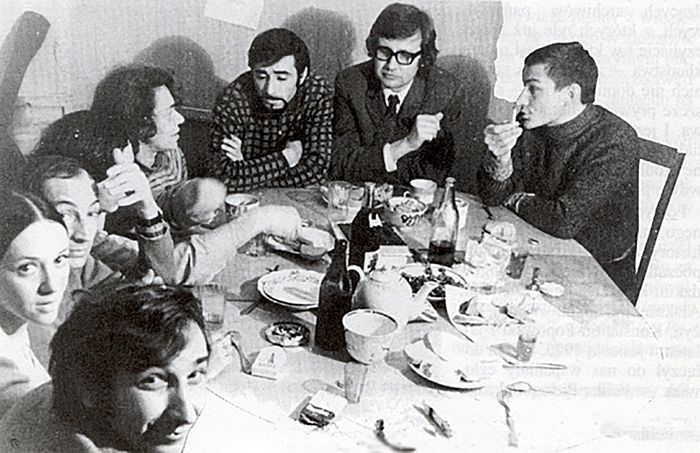
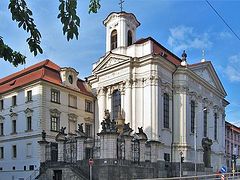
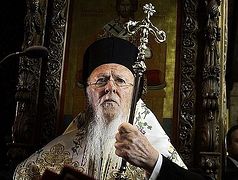
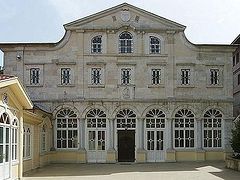
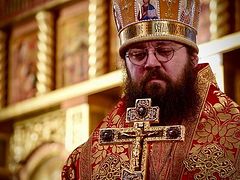

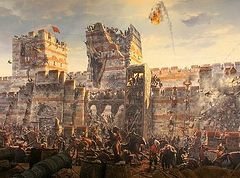
And, by the way, where are all the Churches who have condemned +Bartholomew's actions? Why are they supporting him by remaining in communion with him? Are we all just going to let Bartholomew make himself Pope?
It was in the late 1980s that Mr. Pozner (alternate spelling: Posner) hosted a TV show with Bill Donahue and I got to learn how actual people from the Soviet Union felt. They were humans too.
Maybe the best way to combat liberalism and its vivid arguments and rationales is to live the Gospel: Feed the poor, care for orphans and widows, and help fellow Orthodox Churches like UOC (Metropolitan Onuphry), along with humble prayer, fasting, and the Sacraments.